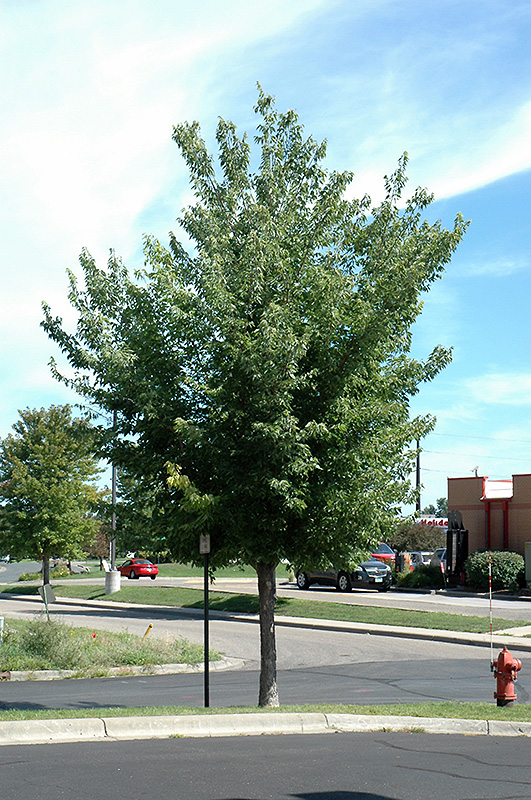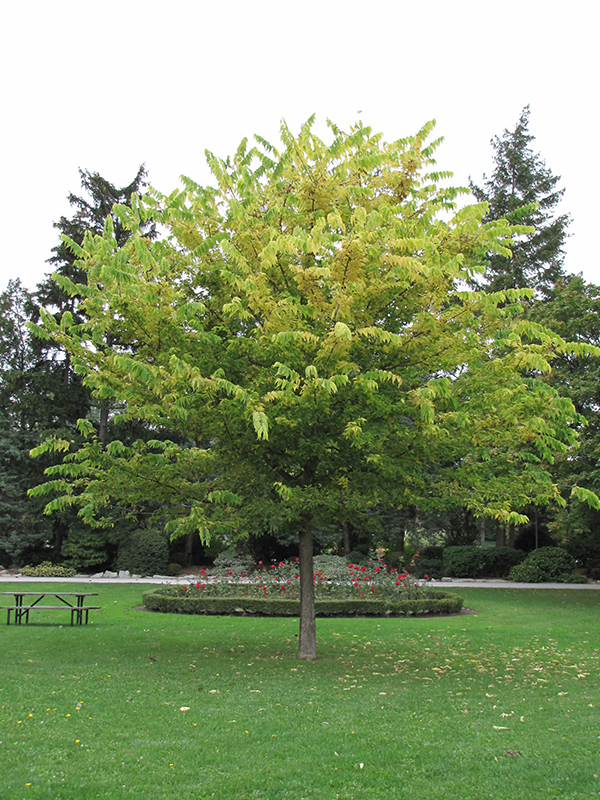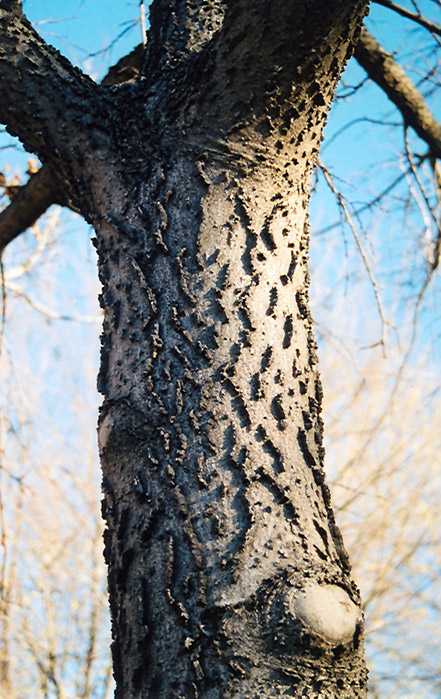Digging deeperPlant Library
Height: 40 feet
Spread: 35 feet
Sunlight:
![]()
![]()
Hardiness Zone: 3
Description:
One of the toughest of shade trees while maintaining an attractive and neat habit of growth; interesting warty bark, looks quite beautiful with age; tolerant of almost any growing conditions except standing water
Ornamental Features
Common Hackberry has rich green deciduous foliage on a tree with a round habit of growth. The pointy leaves turn buttery yellow in fall. However, the fruit can be messy in the landscape and may require occasional clean-up. The warty gray bark adds an interesting dimension to the landscape.
Landscape Attributes
Common Hackberry is a deciduous tree with a more or less rounded form. Its relatively coarse texture can be used to stand it apart from other landscape plants with finer foliage.
This tree will require occasional maintenance and upkeep, and is best pruned in late winter once the threat of extreme cold has passed. It is a good choice for attracting birds and squirrels to your yard. Gardeners should be aware of the following characteristic(s) that may warrant special consideration;
- Messy
- Insects
- Self-Seeding
Common Hackberry is recommended for the following landscape applications;
- Shade
- Windbreaks and Shelterbelts
Planting & Growing
Common Hackberry will grow to be about 40 feet tall at maturity, with a spread of 35 feet. It has a high canopy with a typical clearance of 7 feet from the ground, and should not be planted underneath power lines. As it matures, the lower branches of this tree can be strategically removed to create a high enough canopy to support unobstructed human traffic underneath. It grows at a slow rate, and under ideal conditions can be expected to live for 60 years or more.
This tree does best in full sun to partial shade. It prefers to grow in average to dry locations, and dislikes excessive moisture. It is not particular as to soil type or pH, and is able to handle environmental salt. It is highly tolerant of urban pollution and will even thrive in inner city environments. Consider applying a thick mulch around the root zone in winter to protect it in exposed locations or colder microclimates. This species is native to parts of North America.
A NetPS Plant Finder tool
This Plant Library is for informational purposes only. We may or may not carry the items listed. During many times of the year, we may carry many more plants in our store than are listed in the Plant Library. Please contact us directly at 303-690-4722 or visit our store for current availability and for assistance.


